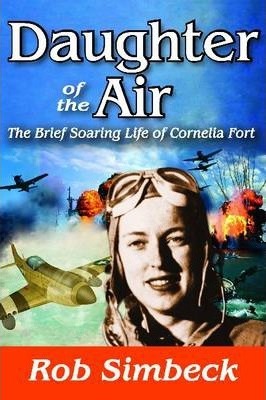
Daughter of the Air: The Brief, Soaring Life of Cornelia Fort
As reported by Flying Singer.
Full disclosure: this is not an entirely unbiased review of this book, because the author has been one of my best friends since our college days at Carnegie-Mellon University in Pittsburgh. That being said, Daughter of the Air really is an excellent book, and one I would have read and enjoyed even if I had never met Rob. It succeeds as a flying book, as a biography of a woman who was ahead of her time, and as a fascinating slice of pre-war and war-era American life.

He didn't bother telling this to his young daughter -- girls didn't do such things anyway, right? Cornelia became a debutante and attended progressive Sarah Lawrence College, but after her father's death, she started taking flying lessons. She loved the freedom that flying gave her, and the book really conveys this feeling, often through quotes from Fort's letters and diaries. She had a talent for flying and became quite a good pilot.
By 1941, Cornelia had accepted a position as a flight instructor in Honolulu, Hawaii. She was flying with a student on the morning of Sunday, December 7, when she noticed some airplanes with unusual markings. She realized that they were Japanese planes attacking Pearl Harbor, so she took the controls and quickly landed. The Japanese planes fired on them, and they later found bullet holes in the fabric. Cornelia and her student were not hurt, but another civilian flight instructor was shot and died.
Having experienced this attack first-hand, Cornelia was anxious to serve her country. There were no opportunities for women as military pilots, but programs were soon established to enlist women in auxiliary roles, mainly ferrying aircraft between factories and military bases, freeing more male pilots for combat duties. Cornelia volunteered and was one of the first few women in this program.
She was happy to be flying in the service of her country and she enjoyed the challenge of flying the faster, larger, and more complex military aircraft. Sadly, her service did not last long -- she was killed in 1943 in a mid-air collision with another Army aircraft over Texas. Although she was only 24 years old, she lived and died doing something that she loved and that she felt was worthwhile.
She is someone I would have loved to have met, and she was literally an inspiration to me. Reading this book in 1999 helped me realize that I needed to find a way to continue and complete my flying lessons, no matter how difficult or inconvenient that might be. Lifelong dreams are too important to ignore!
